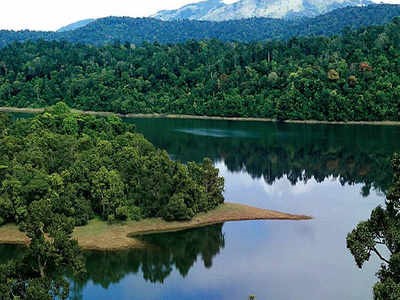
Kerala church to govt: Make sure buffer zones don't erode human habitation
Ahead of September 4 deadline, Kerala Catholic Bishops’ Council alleges state government has done little field work with regard to fixing buffer zones

The Kerala Catholic Bishops’ Council (KCBC) – the collective of Catholic churches in Kerala – has submitted representations to the state and Union governments, urging them to fix the buffer zones well within the existing boundaries of forests without encroaching into human habitations.
A Supreme Court order dated June 3, 2022, mandated an Eco-Sensitive Zone (ESZ) in a 1 km radius around protected forest areas, wildlife sanctuaries and national parks. Kerala has forest areas in 13 out of its 14 districts, the only exception being Alappuzha, which is dotted with backwaters and wetlands.
Also read: SC order on buffer zone puts Kerala in a quandary; here’s why
Per the SC order, the governments are supposed to submit their proposals regarding buffer zones for wildlife sanctuaries and national parks in four months to the Central Empowered Committee of the Union government. Ahead of the September 4 deadline, the KCBC alleged that no field work has been carried out by the respective departments to finalise the zones.
Work in progress
According to the government, the process of drawing up maps on the human habitation to be affected by buffer zones is still progressing. “We have been preparing a report on buffer zones by satellite mapping. A draft report has already been submitted to the government and the rest of the work is in progress,” A Nizamudeen, director of the Kerala State Remote Sensing and Environment Centre, told The Federal.
As far as farmer-organisations are concerned, satellite mapping of buffer zones will not be sufficient to address the woes of farmers.
“The nature of human habitation is not the same in Kerala as we see in the other states. It is very difficult to demarcate areas of human habitation, agriculture land and forest land. A door-to-door physical survey is necessary to decipher forest and revenue lands,” Fr Jacob Palakkappilly, KCBC spokesperson, told The Federal.
The Catholic Church has taken the lead role in organising the settler farmers in hilly districts such as Idukki, Wayanad and Pathanamthitta, hit most by the SC order on buffer zones. According to them, many crowded townships and thickly populated human habitations will fall under the buffer zone if the 1 km distance is strictly applied.
Though Christians are a minority community in Kerala, the church has a history of such social interventions.
“Kumily town of Idukki district falls under the buffer zone of the Periyar Tiger reserve. Sultan Bathery town (in Wayanad) will also fall under the buffer zone of the Wayanad wildlife sanctuary,” said Fr Jacob.
Even the High Court of Kerala is likely to fall in the buffer zone if the 1 km distance rule is strictly followed. The Mangalavanam bird sanctuary, with an area of 2.74 hectares, which is a literal ‘forest’ in the middle of Kochi city and home to migratory birds, is situated adjacent to the High Court building.
Also read: Centre to move SC on issue of ESZ around protected forests: Union MoS
Too much of a good thing?
Kerala’s thick forest cover appears to be causing a problem for its citizens. The state has 23 wildlife sanctuaries and national parks covering 3,084 sq km, with 1,347 sq km earmarked as ecologically sensitive. The forest area of Kerala constitutes 28 per cent of the total land area.
“A major chunk of the land is governed by various restrictions on land use. Around 300 km is under coastal zone regulation, 3,800 km is governed by Kerala Wetland and Paddy Conservation rules, and around 69 per cent of the land is regulated by various zonal rules. We have to consider this unique scenario of Kerala,” pointed out Fr Jacob.
Also read: Pallikaranai marshlands in Chennai, now a Ramsar site, is unique
The state cabinet recently approved a proposal submitted by the Department of Wildlife and Forest excluding human habitation, agriculture and commercial activities from the buffer zone rule. According to the GO issued on August 10, the government has decided to stay with the proposal excluding the areas of human habitation. It will also submit a review petition in the Supreme Court against the June 3 ruling.
The Supreme Court has said that any relaxation will be given only on the recommendations made by the Central Empowered Committee of the Ministry of Environment and Forest. The respective state governments are required to submit their contentions on the matter.


